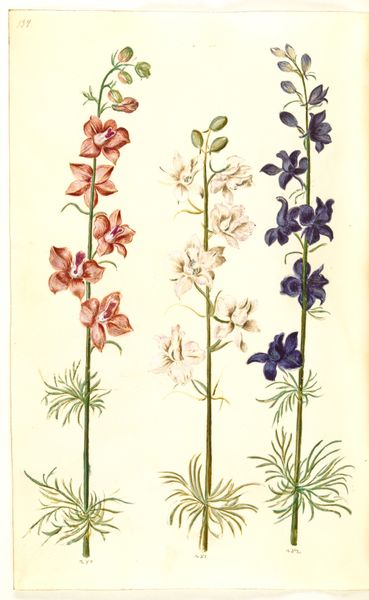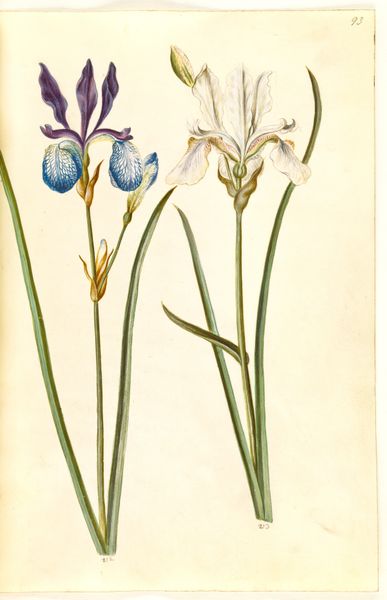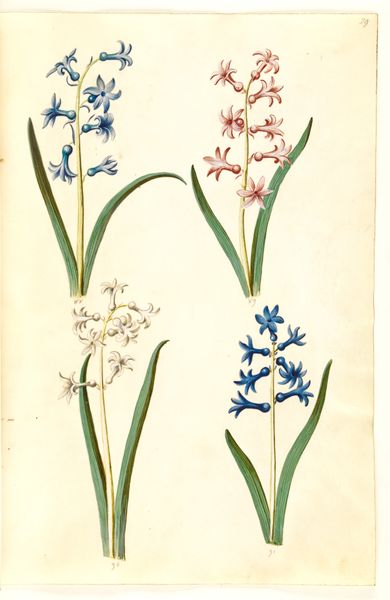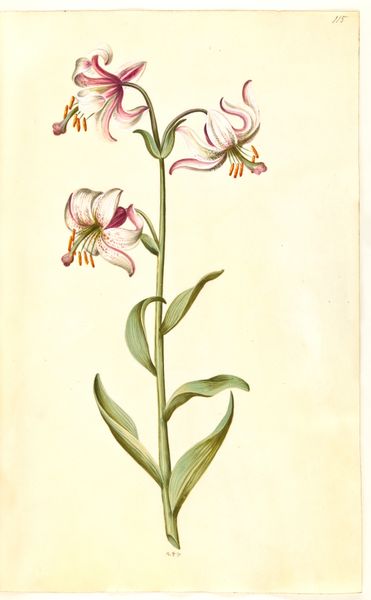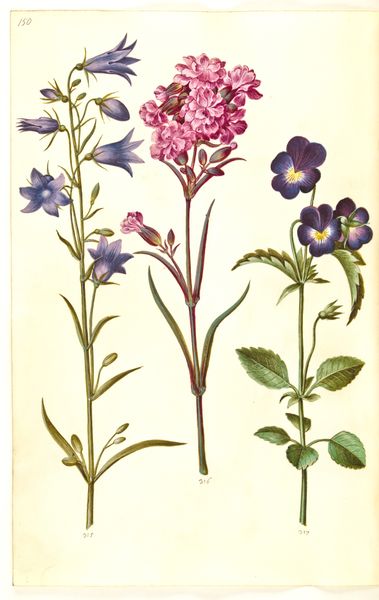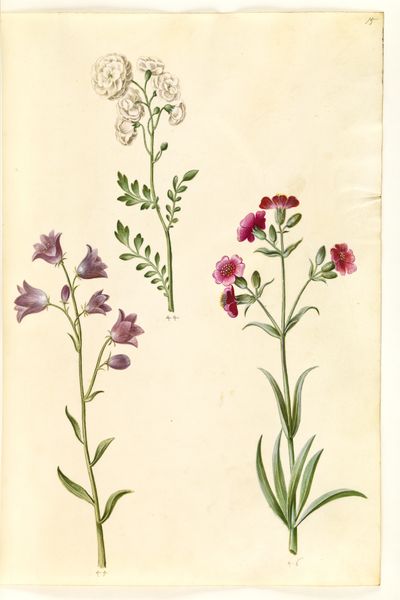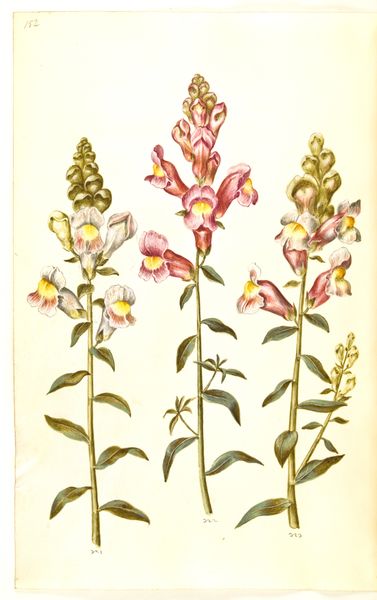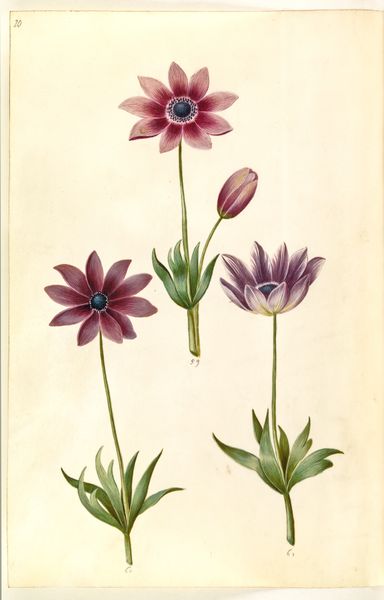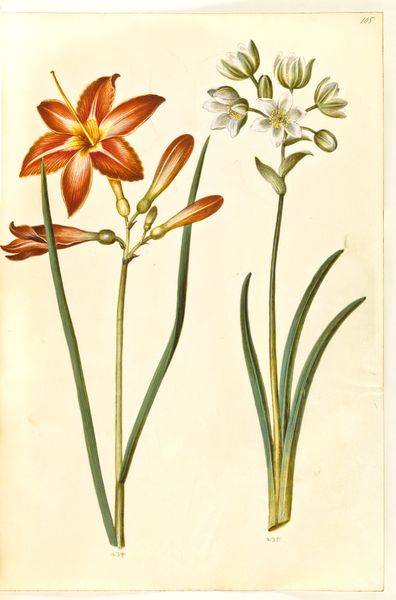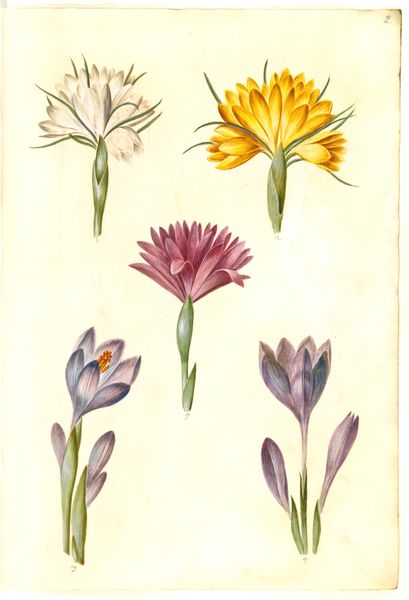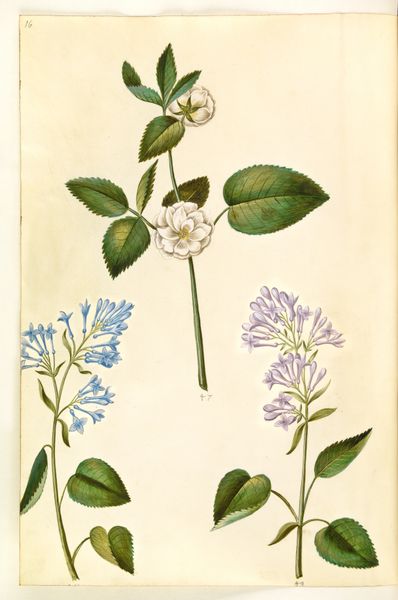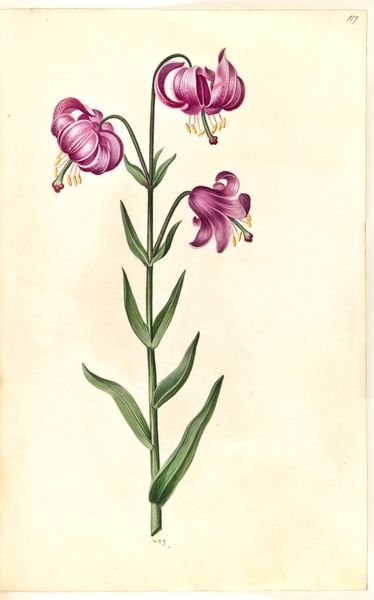
drawing, gouache, watercolor
#
drawing
#
gouache
#
landscape
#
watercolor
Dimensions: 375 mm (height) x 265 mm (width) x 85 mm (depth) (monteringsmaal), 358 mm (height) x 250 mm (width) (bladmaal)
Curator: This lovely drawing, titled Consolida regalis (korn-ridderspore), was rendered between 1635 and 1664 by Hans Simon Holtzbecker. He worked primarily in watercolor and gouache. What strikes you about this composition? Editor: The immediate sense is one of gentle stillness. Holtzbecker’s choice of watercolor lends a delicate luminosity to the flora. There's an almost scientific precision to the botanical rendering. Curator: It’s fascinating to consider these drawings within the broader context of the 17th century, a period of intense exploration and categorization of the natural world. Holtzbecker’s art was often commissioned to document royal gardens, but beyond mere scientific record, what power dynamics might exist when the ruling class gets to literally capture and archive flora from across the empire? Editor: You’ve hit on something essential. Still, on its own merits, the linear clarity is wonderful, guiding the eye up the stems, to then alight upon the unique geometry of each flower head. Observe the nuanced shift from violet to pale rose in the blooms, each color hinting at different stages in its lifecycle. Curator: And what does that lifecycle represent beyond botanical processes? Perhaps notions of life, death, class structures or gender constructs inherent in societal views during Holtzbecker’s time? What could these renderings of seemingly harmless flora tell us about Holland's burgeoning colonial aspirations? Editor: Perhaps less didactic and more simply a celebration of natural form. Consider how Holtzbecker utilizes negative space—the creamy expanse surrounding the plants enhances their presence. It focuses the eye. Curator: Yet isn’t it imperative to acknowledge how those acts of artistic creation might further embed those societal powers? It demands a contemporary understanding beyond mere formalism. Editor: I respect that point. I would just caution against forsaking careful formal observation. It still offers direct and crucial insight. Curator: An appropriate closing note! Thank you for guiding us through the intersection of artistry and historical understanding. Editor: My pleasure. The balance of perception and historical perspective adds a layer of depth to observing botanical art like Holtzbecker’s.
Comments
No comments
Be the first to comment and join the conversation on the ultimate creative platform.
